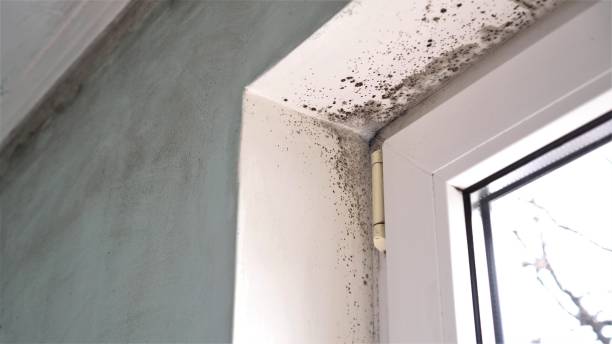Did you know that mold on walls is common when it rains, and more likely to develop under furniture? Mold can not only have a noticeable aesthetic impact, but it can also cause health risks.
Having mold in your home can be a stressful experience. In this article, you’ll learn the steps to thoroughly clean mold.
What Is Mold?
Mold is a member of the fungus family and can be found in a variety of environments, including homes. It is composed of spores that can survive in wet or dry environments. When water or other substances are introduced to the mold, it reproduces quickly, forming colonies.
Mold can grow anywhere there is moisture and dark conditions. It often grows on wood, plastic, or fiberglass surfaces and in air vents, water pipes, and even inside walls or ceilings.
Mold can be harmful if it grows in high concentrations, accumulates on surfaces, or enters your body. Once mold has formed, it is difficult to remove without damaging the surface.
You can recognize mold growth by its black or greenish-gray colonies, which resemble those of fungus. If you’re not sure whether you have mold, consult a health professional.
Symptoms Of Exposure To Mold
If you think you have been exposed to mold, there are a few things you should do to test your exposure and identify any health problems that may result.
Symptoms of exposure to mold include:
- respiratory issues such as fever
- shortness of breath or coughing
- skin problems, such as rashes or blisters
- neurological problems, such as sensitivity to light or flu-like symptoms.
If you are experiencing any of these symptoms, it is important to get checked out by your doctor.
Methods For Removing Mold
Mold can be a dangerous toxin, and can be found all around us. If you find yourself or someone you love struggling with exposure to mold, the following recommended methods will help get the job done right.
Follow these tips to clean your home from mold:
- Make sure your windows and doors are closed and locked when you are cleaning to avoid drafts.
- Use a vacuum cleaner with a HEPA filter if possible. Otherwise use a regular vacuum cleaner with a wet mop. Be sure to cover any surfaces you do not want dirt or mold on, such as windowsills, countertops, and cabinets.
- If you cannot use a vacuum cleaner due to dirt or debris on the floors, use a broom and dustpan to sweep up the mess, and then use a wet mop to clean the floor. Be careful not to flood the room and make sure all surfaces are wet before wiping dry.
- Wipe down any surfaces that may have come in contact with the mold growth. This may include floors, ceilings, walls, furniture, and any other objects that may have been in contact with the spores.
- Remove mold using sterilization. If the mold and spores are still present, it is possible to eliminate them through a process known as caustic gas sterilization. This process can be done within about an hour and can eliminate the spores from any affected area. More than 5 pounds of bleach are normally used in this process, so make sure to wear gloves if you’re going to use it.
- If you’re uncomfortable cleaning the area yourself, take pictures of the contaminated areas. Pictures can help document and track the progress of the cleanup. Call in a professional to clean it, as well as any surfaces that are too large, or too intricate for you to handle. Mold can spread quickly and become hazardous if not properly cleaned.
How To Prevent Mold From Growing Back
If you have had any concerns about mold growing in your home, there are a few things you can do in order to prevent it from happening again. In this article, you can find several ways to make sure mold doesn’t grow in your home again. One of the best ways to prevent mold growth is to clean your home regularly and thoroughly.
First and foremost, make sure to clean the floors and surfaces where mold may grow. This includes vacuuming the floor carefully, using a mop and bucket filled with hot water and detergent, or using a wet/dry vacuum. Make sure to remove all debris, including pet hair.
Next, clean all surfaces that may potentially harbor mold spores. This includes windowsills, light fixtures, fans, ceiling tiles, and walls. Remove any dust or debris that may be present. Following this step will help prevent mold growth from occurring in any of these areas.
Finally, empty the trash and recycle bins often in order to prevent mold from growing in them. If you have pets, keep them indoors at all times during mold cleaning procedures so they do not bring any additional dirt or dust into the home.
Mold is one of the most common indoor allergens, and it can cause significant health problems if you don’t take steps to clean it up. By following these tips, you will ensure that your home is free of mold and able to accommodate all of your indoor allergies.














